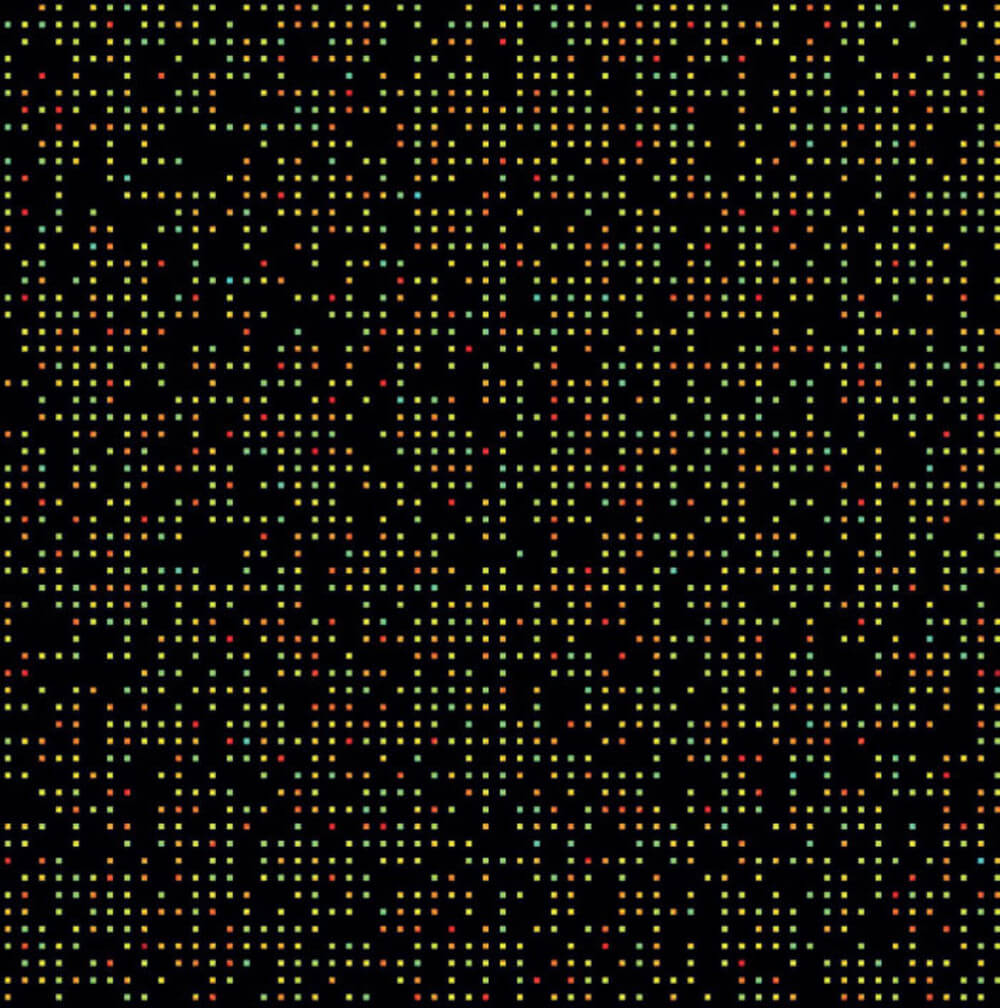It may look like a giant game of space invaders, but each colored dot in this image is an individual cancer cell within a droplet of blood. In this scanned image of single-cell metabolic photoacoustic microscopy (SCM-PAM), different colors represent the amount of oxygen dissolved in each well. To measure oxygen consumption rate, researchers place cells into individual wells filled with blood; those with higher metabolisms consume more oxygen, lowering the level remaining in the blood. But instead of tiny oxygen sensors, which can affect the metabolic rates of the cells, SCM-PAM uses a laser tuned to a wavelength that hemoglobin can absorb and turn into vibrational energy, or sound. How? Hemoglobin’s ability to absorb light at that particular wavelength changes as it becomes oxygenated, meaning that its sound can indicate the degree of oxygenation in the blood. This new approach can analyze 3,000 cells in just 15 minutes, paving the way for a greater understanding of intratumoral heterogeneity.

References
- P Hai et al., “High-throughput, label-free, single-cell photoacoustic microscopy of intratumoral metabolic heterogeneity”, Nat Biomed Eng, [Epub ahead of print] (2019). PMID: 30936431.




